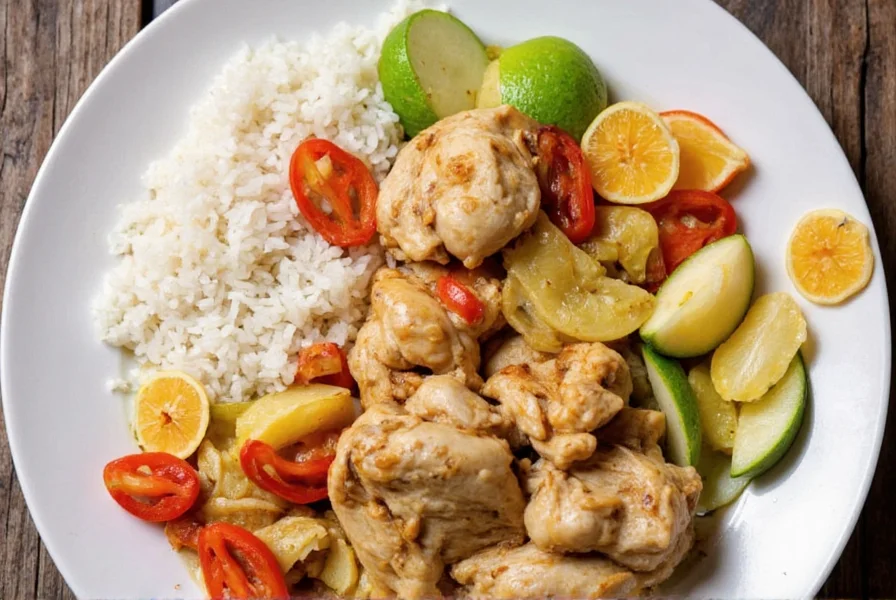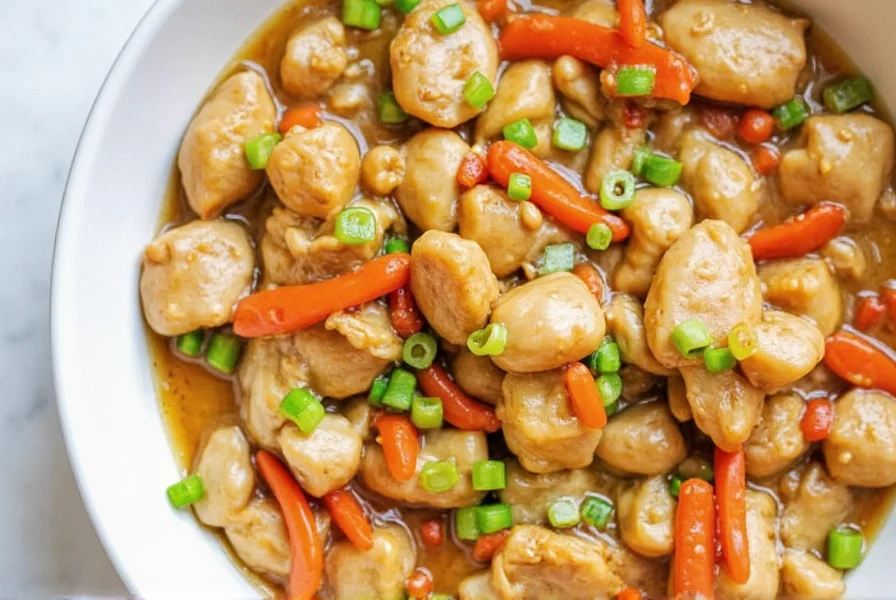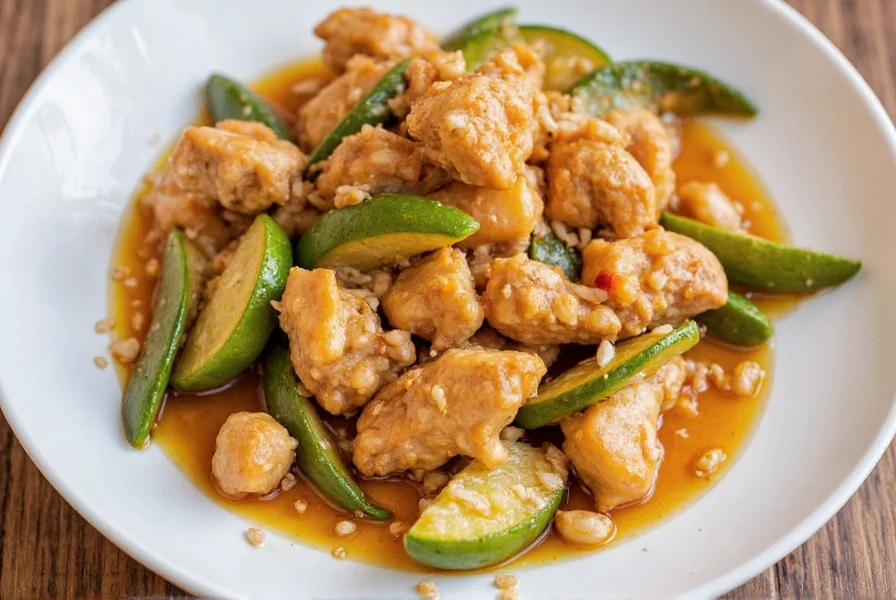Chicken and ginger form one of the most harmonious flavor pairings in global cuisine. This dynamic duo works across multiple cooking methods and cultural traditions, from Chinese stir-fries to Jamaican stews. The spicy warmth of ginger perfectly complements chicken's mild flavor while adding digestive benefits and anti-inflammatory properties.
The Science Behind Chicken and Ginger
Ginger contains gingerol, a bioactive compound that enhances savory flavors while cutting through richness. When combined with chicken, ginger:
- Breaks down proteins for more tender meat
- Neutralizes any potential gamey flavors
- Adds complex warmth without overwhelming heat
- Complements both dark and white meat varieties
For maximum flavor extraction, always use fresh ginger rather than powdered. The volatile oils that give ginger its distinctive character dissipate significantly in dried form.

Four Exceptional Chicken and Ginger Recipes
1. Classic Ginger Chicken Stir-Fry
This easy chicken and ginger recipe comes together in under 20 minutes. For authentic results:
- Use chicken thighs for superior flavor and moisture retention
- Grate 3 tablespoons fresh ginger (never substitute powdered)
- Add half the ginger to the marinade, half during cooking
- Include 2 minced garlic cloves for complementary flavor
Pro tip: Velvet the chicken by marinating with 1 teaspoon baking soda and 1 tablespoon cornstarch for 15 minutes before cooking. This creates restaurant-quality texture.
2. Slow-Cooked Ginger Chicken
Perfect for meal prep, this slow cooker ginger chicken recipe develops deep flavors through gentle cooking:
| Ingredient | Measurement | Preparation Tip |
|---|---|---|
| Chicken thighs | 2 lbs, bone-in | Brown first for richer flavor |
| Fresh ginger | 1/4 cup, sliced thin | Use a mandoline for even slices |
| Low-sodium soy sauce | 1/2 cup | Add 1 tbsp honey for balance |
| Chicken broth | 1 cup | Homemade yields best results |
Cook on low for 4-6 hours until chicken falls easily from the bone. Remove bones before serving over jasmine rice.
3. Baked Ginger Chicken with Roasted Vegetables
This healthy ginger chicken dish requires minimal hands-on time:
- Whisk together 1/4 cup olive oil, 3 tbsp grated ginger, 2 minced garlic cloves, 2 tbsp rice vinegar, and 1 tbsp honey
- Coat 6 chicken thighs and 4 cups mixed vegetables (broccoli, carrots, bell peppers)
- Bake at 400°F (200°C) for 35-40 minutes until chicken reaches 165°F internal temperature
The high heat caramelizes the ginger's natural sugars, creating a complex flavor profile that elevates this simple chicken recipe with ginger and garlic.
4. Traditional Ginger Chicken Soup
This traditional ginger chicken soup recipe provides comfort and immune support:
- Simmer chicken bones with 1/2 cup sliced ginger for 2-3 hours
- Add chicken meat during the last 20 minutes
- Finish with scallions and a splash of rice vinegar
The extended simmering time extracts maximum gingerol from the ginger, creating a deeply flavorful broth with genuine health benefits.

Essential Ginger Preparation Techniques
How you prepare ginger dramatically affects your ginger chicken stir fry recipe results:
- Grated: Maximum flavor release, best for marinades and quick-cooking dishes
- Thinly sliced: Milder flavor, ideal for soups and slow-cooked dishes
- Crushed: Moderate flavor release, perfect for braises
- Whole chunks: Subtle background flavor, suitable for stocks
Always peel ginger with a spoon rather than a knife to avoid removing too much edible flesh. The skin is thin and comes off easily with the edge of a spoon.
Common Mistakes to Avoid
Even experienced cooks make these errors with chicken and ginger recipes:
- Using old, dried-out ginger (should be firm with smooth skin)
- Adding all ginger at the beginning (some should be added later for brighter flavor)
- Overcooking ginger (causes bitterness)
- Not balancing ginger's heat with sweetness (honey or brown sugar helps)
Ingredient Substitutions and Variations
Adapt these ginger chicken dinner ideas to your dietary needs:
- Gluten-free: Use tamari instead of soy sauce
- Dairy-free: Naturally compliant (no dairy in traditional preparations)
- Low-sodium: Reduce soy sauce by half and add extra ginger for flavor
- Vegan option: Substitute chicken with king oyster mushrooms
For different flavor profiles, try adding:
- Five-spice powder for Chinese-inspired dishes
- Coconut milk for Southeast Asian variations
- Lime juice and cilantro for brighter, fresher notes
Storage and Reheating Guidelines
Proper storage maintains the delicate balance of flavors in your homemade ginger chicken sauce:
- Refrigerate for up to 4 days in airtight containers
- Freeze for up to 3 months (soups and stews freeze best)
- Reheat gently over medium-low heat to preserve ginger's volatile oils
- Always add a splash of liquid when reheating to prevent drying
Never microwave ginger dishes on high power, as this destroys the delicate flavor compounds.
Frequently Asked Questions
What's the best cut of chicken for ginger recipes?
Bone-in, skin-on chicken thighs provide the most flavor and stay moist during cooking. For quicker recipes, boneless chicken breasts work well but require careful timing to prevent drying out. Thighs contain more fat which helps carry ginger's fat-soluble flavor compounds.
Can I substitute ground ginger for fresh in chicken recipes?
While possible in a pinch, ground ginger lacks the bright, complex flavor of fresh. Use 1/4 teaspoon ground ginger for every tablespoon of fresh grated ginger, but expect a less vibrant result. Fresh ginger's volatile oils provide the distinctive flavor that dried cannot replicate.
How do I prevent ginger from burning when stir-frying?
Add ginger after aromatics like garlic have cooked for 30 seconds, but before the main ingredients. Keep heat at medium-high (not maximum) and stir constantly. Having all ingredients prepped before cooking (mise en place) prevents overcooking during the brief stir-fry process.
Why does my ginger chicken taste bitter?
Bitterness usually comes from overcooked ginger or using old, dried ginger. Ginger burns easily at high temperatures - cook it just until fragrant (about 30 seconds). Also ensure your ginger is fresh with smooth, taut skin, not shriveled or moldy.
How can I make ginger chicken less spicy?
Reduce the amount of ginger, remove the ginger pieces before serving, or balance with sweetness (honey, brown sugar) and acidity (rice vinegar, lime juice). Younger ginger tends to be milder than mature ginger - look for smooth, pale skin rather than thick, fibrous skin.











 浙公网安备
33010002000092号
浙公网安备
33010002000092号 浙B2-20120091-4
浙B2-20120091-4